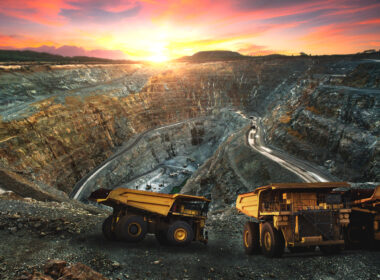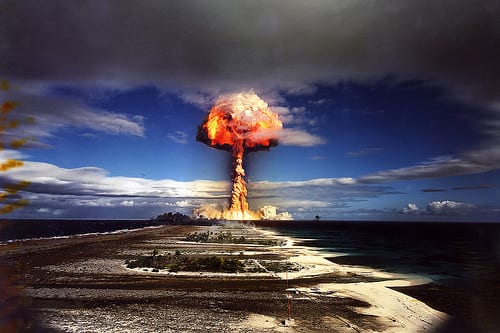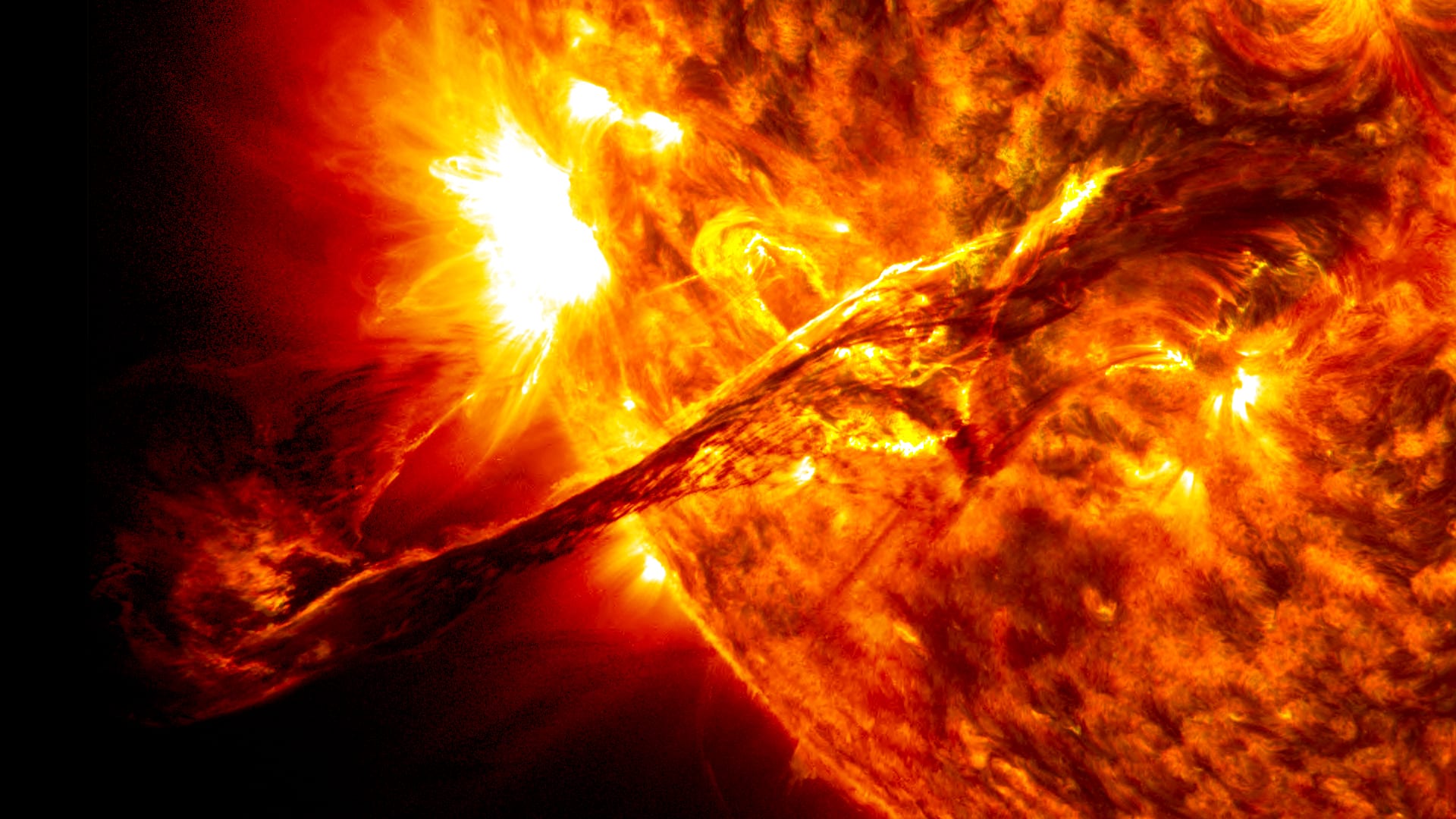
Dear Readers,
For the first time since 2007, the Dow has finally climbed passed 14000. It’s still a few hundred points shy of the 14300 where I said it could go last April, but given the strength of the market and potential short coverings, we could see this number breached later in the year; especially considering that there still remains a record amount of money sitting on the sidelines.
However, we have to keep in mind that we’ve just had one of the best January market performances in history, with the markets rising 12 out of the last 14 days. This could mean the near-term buying may soon be exhausted.
But there are also historical factors to consider.
As I mentioned last week, the Dow Industrials has not performed like this since 1994. But that same best January in 1994 was followed by a nasty decline of 10% the month after.
Historically, the market has a tendency to go higher up until the beginning of February, following an election year. From here, it historically takes a slight correction for about two months before going higher before peaking around May.
Is QE Working?
Believe it or not, QE has been working. Before you send me comments and angry letters saying otherwise, just hear me out. QE is not good for our future, but if you just take one look at the markets, you will see it has done what the Fed wanted it to do.
The goal of QE was to instill confidence in the market by inflating asset prices. The stock market is now back to near all-time highs and the price of assets around the world are near record bubble levels.
While the market is still giving investors jitters, it has shown tremendous strength from QE.
It may not feel like it for many Americans, but with the Dow breaching 14000, shareholders and investors have seemingly recovered more than $8 trillion in wealth lost during 2008.
The market cycle has forced those investors who lost their money in 2008 out of the market, but has brought in new money from new investors. It has created a wave of new millionaires and billionaires, with the population of millionaires in America now higher than in 2007.
According to the Federal Reserve, between 2007 and 2009, more than a third of the top one percent was replaced by new money.
And this new money is spending big time.
Prices for wine, fine art, collectibles, luxury cars, jewellery, and watches are all climbing far past their 2007 highs. Prices for exotic mansion homes are also soaring. And the wait-list for Ferraris and Lamborghinis are back to pre-crisis levels.
How can anyone say QE hasn’t worked?
It would seem everything is back on track and back to normal. Employment is slowly rising again, along with housing. The stock market is back to pre-2008 levels and investor sentiment is climbing higher. Yes, everything is back to near pre-2008 levels and we have been on a major bull run since the 2008 crash.
That’s scary.
While QE most certainly has its positives, it also comes along with a lot of negative consequences.
QE and Negative Real Interest Rates
First of all, just like the banks around the world*, the Fed leverages its accounts and lends using the money that is assumed to be in their vaults. Banks never have 100% of their deposits in their vaults at any given time. As a matter of fact, they only keep very little money in their vaults, hence the name “fractional reserves.”
(*the big difference between the Fed and other banks is that the Fed never gets audited)
In short, every bank runs a Ponzi-like credit scheme. For example, when you go to the bank and deposit your money, the bank takes that money and lends it out to others willing to pay the price. The bank uses your money and receives interest from those who want to borrow it.
But your bank never holds the same amount of money that has been deposited there. In other words, it lends money out, even if the money isn’t there. As more deposits are made, more credit is created; thus forcing a leveraged multiplier of credit that is ever-increasing.
Everything has its cycle, including the banking system; including the Fed.
When a bank begins to lend money, interest rates are set equal to the amount of money in the system. But as more credit is created, and thus more money in the system, interest rates begin to drop and the borrowing begins to become more speculative as both borrowers and lenders take on more risk. Eventually, this process multiplies and gets to the point where additional credit is required just to cover the interest payments on the original loans.
Compare this to America’s current situation.
Where do you think we are in the cycle of the banking system?
What’s the eventual end result of the cycle? Accelerating inflation.
We are seeing the markets move up, but it hasn’t moved up because of productive innovation or real growth. It has moved up because of market speculation based on cheap credit and a growing money supply.
Investors and the CEOs of many junior companies can’t seem to understand why the bankers are not pouring money into small business development and transitioning them into the public markets. The answer is that the system is now dominated by leveraged speculation that hinders real growth.
All of the money being created is being fuelled more and more into the hands of creditors and market speculators, and less and less into the real growth of the economy. That is why we will likely continue to achieve even less economic growth in the coming years, despite what the stock market is telling us.
It Just Gets Bigger
The current credit bubble in the US is now at $58 trillion and counting. The more money printed, the less affect it has on the real world economy. Every dollar of new credit generates less and less dollars of real GDP. It now takes us $20 of new credit to generate $1 of real GDP; it took only $4 in the eighties.
But there’s no turning around now. That is why Bernanke just announced last week that he isn’t close to easing up on the $85 billion in monthly bond purchases, despite remarks earlier in the month that hinted he might.
Let’s get real. As I have mentioned time and time again, the printing cannot stop now; not until we see major growth in the economy or a major growth in inflation, neither of which seem within reach in the short term.
Obama and the Fed will do whatever they can to spur growth. This includes allowing the no-money down mortgages again; the same strategy that pushed many homeowners into foreclosure during the housing bust.
More credit will be forced into the economy through many different vehicles, leading a cycle that only ends with higher inflation in the long term.
Canadian Markets: When Will it Climb? The TSX vs S&P
Luckily, the Canadian banking system is nowhere near as leveraged as the American. That means our currency is far better protected as we have less debt and less hyperbolic credit systems. That may also be the reason why many Canadians are choosing to keep their cash locked up, instead of pumping it into the Canadian markets.
In the last year, we have witnessed the US market, including the NASDAQ, DOW, and S&P 500, climb over 10%. Yet here we are with a much more stable monetary system, and our Canadian market remains subdued; climbing less than 2% over the last year and down nearly 2% over the last five. Meanwhile, in the last five years, the S&P is up over 13%, the Dow up 15%, and the NASDAQ up an astounding 38%.
I’ve always said the retail market and the media is often late to the party, and that is how we’ve been able to accurately forecast market events. But when it comes to timing, no one is later than the Canadian market.
So what do we do from here?
Again, I must stress that the market is fuelled by sentiment more than fundamentals. This is especially the case when it comes to our less liquid Canadian market. The fact that there are many Canadian companies trading at cash value says it all. We’ve done nothing for the last five years but watch the world markets climb.
We need a real spark to get the Canadian markets moving again, and I am not exactly sure where it will come from at this point.
From a historical timing perspective, however, now may be the time to get involved.
From now until the first week of March, the TSX has outperformed, on average over the last 20 years, the S&P 500 by about 2.5%. Not only is it RRSP and TFSA contribution time, the seasonality of the TSX-dominated sectors (financials, energy, and materials) generally do well around this time.
We’re already seeing the financial sector move up slowly, and energy has been climbing over the last 2 weeks (as predicted in Prepare for a Crisis two weeks ago). While the materials sector hasn’t produced results yet, we just saw the price of copper, nickel and zinc break above key resistance levels this week. While this hasn’t translated into stocks yet, we could see a little fuel into the sector over the next month.
The End Game
We’re nearing a tipping point where investable assets are posing too much risk for too little return. The yield in long-term bonds are becoming too low for the amount of time you have to hold them and credit spreads are too tight relative to default risk.
If the market continues in this speculative manner, we may soon see PE (Price-to-Earnings) ratios that are too high relative to growth risks. That’s when credit will be used in exchange for real assets such as gold, silver and real estate. This won’t happen overnight, but it is already slowly happening; beginning with the wealthiest people in the world…
The idea is to turn paper into something tangible such as gold and other commodities; anything that can’t be created or reproduced as easily and as fast as credit and currency.
I will be pulling the triggers on some new investments soon.
Until next week,
Ivan Lo
Equedia Weekly

Questions?
Call Us Toll Free: 1-888-EQUEDIA (378-3342)
Disclosure: I am long gold and silver through ETF’s and bullion, as well as long both major and junior gold and silver companies. Our reputation is built upon the companies we feature. That is why we invest in every company added to our Equedia Select Portfolio. It’s your money to invest and we don’t share in your profits or your losses, so please take responsibility for doing your own due diligence. Remember, past performance is not indicative of future performance. Just because many of the companies in our previous Equedia Reports have done well, doesn’t mean they all will.
Disclaimer and Disclosure
Equedia.com & Equedia Network Corporation bears no liability for losses and/or damages arising from the use of this newsletter or any third party content provided herein. Equedia.com is an online financial newsletter owned by Equedia Network Corporation. We are focused on researching small-cap and large-cap public companies. Our past performance does not guarantee future results. Information in this report has been obtained from sources considered to be reliable, but we do not guarantee that it is accurate or complete. This material is not an offer to sell or a solicitation of an offer to buy any securities or commodities.
Furthermore, to keep our reports and newsletters FREE, from time to time we may publish paid advertisements from third parties and sponsored companies. We are also compensated to perform research on specific companies and often act as consultants to many of the companies mentioned in this letter and on our website at equedia.com. We also make direct investments into many of these companies and own shares and/or options in them. Companies do pay us to advertise on our website and we often distribute our reports on featured companies. While we are never paid to write a rosy and positive report on any company, we do market our reports using the advertising fees paid for by our featured companies. This process allows us to continue publishing high-quality investment ideas at no cost to you whatsoever. Our revenue is generated by sponsor companies and we grow our readership by using the advertising fees we charge to distribute our reports. This helps both Equedia and our client companies gain exposure and allows us to provide you with our research at no cost.
Therefore, information should not be construed as unbiased. Each contract varies in duration, services performed and compensation received.
If you ever have any questions or concerns about our business or publications, we encourage you to contact us at the email or phone number below. Equedia.com is not responsible for any claims made by any of the mentioned companies or third party content providers. You should independently investigate and fully understand all risks before investing. We are not a registered broker-dealer or financial advisor. Before investing in any securities, you should consult with your financial advisor and a registered broker-dealer. The information and data in this report were obtained from sources considered reliable. Their accuracy or completeness is not guaranteed and the giving of the same is not to be deemed as an offer or solicitation on our part with respect to the sale or purchase of any securities or commodities. Any decision to purchase or sell as a result of the opinions expressed in this report OR ON Equedia.com will be the full responsibility of the person authorizing such transaction.
Please view our privacy policy and disclaimer to view our full disclosure at http://equedia.com/cms.php/terms. Our views and opinions regarding the companies within Equedia.com are our own views and are based on information that we have received, which we assumed to be reliable. We do not guarantee that any of the companies will perform as we expect, and any comparisons we have made to other companies may not be valid or come into effect. Equedia.com is paid editorial fees for its writing and the dissemination of material and the companies featured do not have to meet any specific financial criteria. The companies represented by Equedia.com are typically development-stage companies that pose a much higher risk to investors. When investing in speculative stocks of this nature, it is possible to lose your entire investment over time. Statements included in this newsletter may contain forward looking statements, including the Company’s intentions, forecasts, plans or other matters that haven’t yet occurred. Such statements involve a number of risks and uncertainties. Further information on potential factors that may affect, delay or prevent such forward looking statements from coming to fruition can be found in their specific Financial reports.
Equedia Network Corporation is also a distributor (and not a publisher) of content supplied by third parties and Subscribers. Accordingly, Equedia Network Corporation has no more editorial control over such content than does a public library, bookstore, or newsstand. Any opinions, advice, statements, services, offers, or other information or content expressed or made available by third parties, including information providers, Subscribers or any other user of the Equedia Network Corporation Network of Sites, are those of the respective author(s) or distributor(s) and not of Equedia Network Corporation. Neither Equedia Network Corporation nor any third-party provider of information guarantees the accuracy, completeness, or usefulness of any content, nor its merchantability or fitness for any particular purpose.













Boom Rive Hack Secrets and cheats outil Actions: Boom Rive
Coins Hack Boom Diamonds Rive Hack savoir additionally bas los angeles
page!